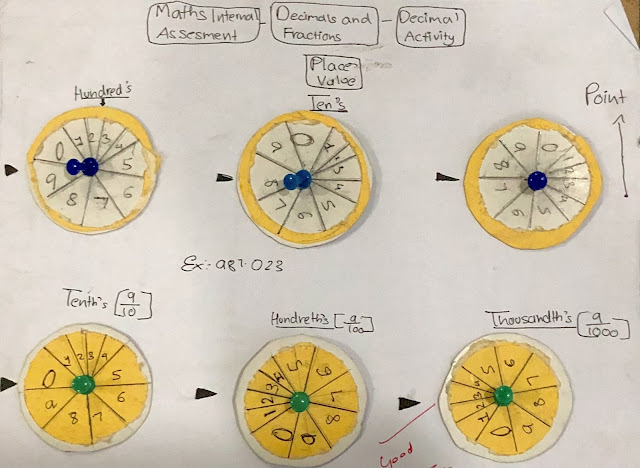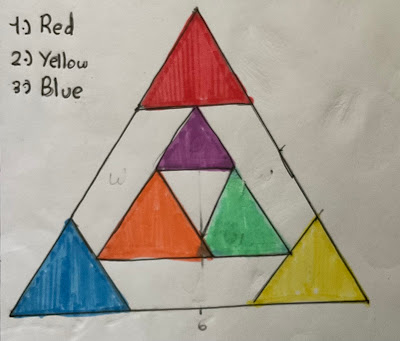Maths projects
To make a parallelogram like the one in the image, follow these steps:
Start by drawing two diagonals: Using a ruler, draw two intersecting diagonal lines that meet at a point, as shown in the center of the diagram.
Mark the points where the diagonals meet the edges: Label the four points where the diagonals touch the edges as A, B, C, and D to form the vertices of the parallelogram.
Draw the sides: Using a ruler, connect points A to B, B to C, C to D, and D to A, ensuring opposite sides are parallel and equal in length.
Indicate the angles and diagonals: Clearly mark the angles at each corner, and highlight the diagonals to emphasize the relationship between the sides and angles.
Fun Decimal and Fraction Learning Activity for Kids: Visualizing Place Value
Teaching children about decimals and fractions can sometimes be a challenge, but incorporating hands-on activities makes learning fun and engaging. The image above showcases a creative math activity designed to help students understand decimal place value, including tenths, hundredths, and thousandths, through a visual and interactive approach.
Here’s a breakdown of how this activity works and how you can replicate it at home or in the classroom:
Materials Needed:
- Cardboard or thick paper
- Colored markers or pencils
- Push pins or tacks
- A ruler and scissors
Step-by-Step Guide to Creating the Activity:
Create the Decimal Wheels: Each circle or "wheel" in the image represents different decimal place values—tenths, hundredths, and thousandths.
- First Wheel (Tenths): Divide the circle into 10 equal parts and label them 0-9, representing one-tenth (1/10). This helps kids visualize the first place after the decimal.
- Second Wheel (Hundredths): Divide the circle into 100 equal parts, representing one-hundredth (1/100). This shows how the decimal system grows more precise.
- Third Wheel (Thousandths): This one is divided into 1,000 parts to illustrate the thousandths place.
Add Colors for Engagement: Each section of the wheels can be color-coded to make it easier for children to see the divisions and understand the value of each section. The use of yellow in the image makes the different decimal place values stand out clearly.
Use Spinners for Interaction: Attach small spinners in the center of each wheel using push pins or tacks, allowing students to spin and land on a specific decimal value. This adds an interactive element, helping students learn by doing.
Label the Wheels: Label each wheel according to the decimal place value it represents—tenths, hundredths, and thousandths. You can also include fraction representations (e.g., 1/10, 1/100, 1/1000) to connect decimals with fractions.
How This Activity Helps:
- Visualizing Place Value: The wheels help students see how decimals and fractions are related to each other and how each place value affects the number's precision.
- Interactive Learning: The spinners make learning more engaging by adding a game-like element, which can boost focus and retention.
- Multiple Concepts in One: This activity covers both decimals and fractions, making it an efficient way to teach students two related math concepts.
Conclusion:
This decimal and fraction activity is a fantastic way to help children understand place value in a hands-on, visual manner. It encourages active participation, making the learning process enjoyable and effective. If you're a teacher or a parent, give this activity a try and watch your students grasp the concept of decimals with ease!
Keep reading to learn about four types of multiplication: addition method, long multiplication, grid method, and drawing lines. Some other strategies for multiplication include partial products, area model and lattice
Price Activity














No comments:
Post a Comment